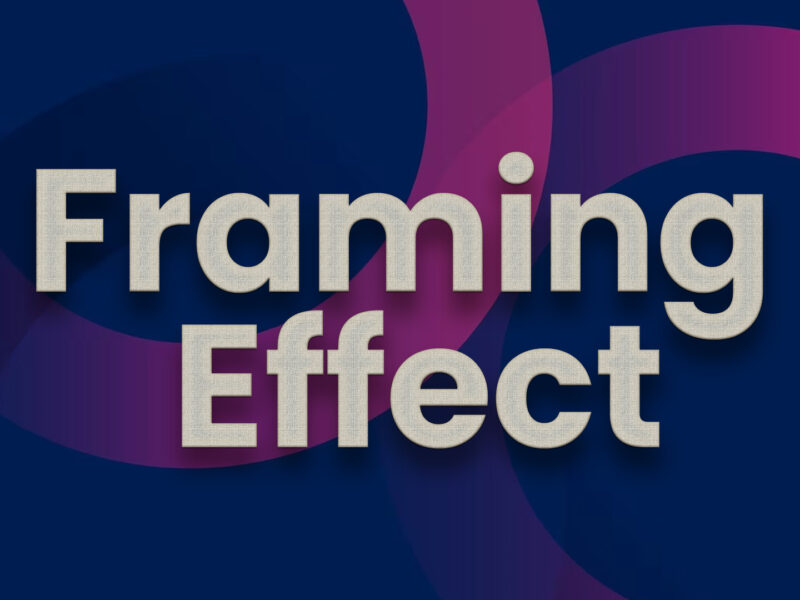- The framing effect use profound reactions to direct activities, eclipsing objective realities.
- It saturates different correspondence structures, enveloping visuals, composed content, and even non-verbal communication.
- Financial backers are vulnerable to framing effect because of their tendency to limit misfortunes and boost gains.
- To neutralize framing effect, financial backers ought to zero in on substantial information as opposed to surface recommendations.
How data is introduced can fundamentally influence our dynamic interaction, a peculiarity known as the framing effect. This mental predisposition features the propensity of people to settle on decisions in light of how choices are outlined, as opposed to exclusively on the realities introduced. From monetary speculations to regular purchaser decisions, the framing effect assumes an essential part in molding our choices.
Understanding the framing effect
The framing effect, frequently alluded to as framing predisposition, highlights the significance of discernment in direction. Rather than zeroing in exclusively on the objective data, individuals are affected by the profound reaction evoked by the show. This predisposition is clear across different parts of human way of behaving, from venture choices to correspondence methodologies.
Instances of the framing effect
1. View of Risk and Reward: Envision your monetary consultant presents two choices for a speculation portfolio:
Choice A: A portfolio with a 70% likelihood of coming out on top.
Choice B: A portfolio with a 30% opportunity of disappointment. Regardless of the indistinguishable results, most people incline towards Choice A because of its positive framing.
2. Greatness Matters: While settling on a promotion crusade for a vehicle deal, think about these choices:
Choice X: $1,000 money back on vehicle acquisition.
Choice Y: 5% off the vehicle’s selling cost. In spite of yielding a similar last value,
Choice X frequently shows up more engaging because of the bigger mathematical worth.
3. Venture Situations: In an Initial public offering situation, a speculation consultant presents two prospects:
Choice I: A 70% opportunity of offer cost expanding by 45% on the principal exchanging day.
Choice II: A 30% opportunity of Initial public offering disappointment however potential 45% stock cost increment. In spite of offering a similar possible addition, Choice I is leaned toward because of positive framing.
Framing effect types
- Hear-able framing: Conveyance tone and way impact reactions.
- Visual framing: Obvious signals, like tones and text style, shape discernments.
- Non-verbal communication: Non-verbal communication conveys implicit messages successfully.
- Incentives: Causing buyers to feel they’re acquiring for less.
Exploring Speculation Choices and framing effect
Financial backers ought to be careful to abstain from falling into the snares of framing effect while pursuing monetary choices. Methodologies to remain focused include:
- Normal Investigation: Base venture choices on strong measurements like EPS, IRR, and Stake.
- Basic Assessment: Pay attention to your gut feelings and direct intensive exploration prior to financial planning.
- Long haul Point of view: Keep away from easy money scams and spotlight on long haul gains.
Conclusion
The framing effect features the strong impact of show on our decisions. By understanding this mental predisposition, people can explore venture choices and ordinary decisions all the more successfully. Recollect that while framing can give a beginning stage to navigation, intensive exploration and normal investigation stay the establishment for fruitful speculations and informed decisions.
